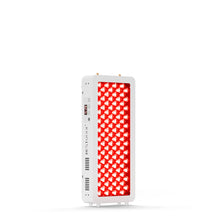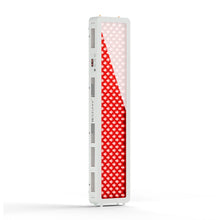What Is Lyme Disease?
First diagnosed in the 1970s in Lyme, Connecticut, Lyme disease is a bacterial infection mainly caused by Borrelia burgdorferi and rarely by Borrelia Mayonii. Black-legged ticks infected with this organism bite humans to cause Lyme disease. This tickborne illness affects millions worldwide. According to the Centres for Disease Control, up to 30,000 Americans get Lyme disease annually. Timely diagnosis can treat Lyme disease effectively with antibiotics. However, if patients don't visit a doctor or delay diagnosis, it becomes difficult to treat the disease. In some people, Lyme disease can develop into post-treatment Lyme disease syndrome (PTLDS), which isn't only dangerous but also difficult to treat. In fact, the exact root cause is "inflammation."

Common Symptoms
Early symptoms include the following:
- Red circular or oval rashes (bulls-eye rash)
- Fever
- Poor appetite
- Fatigue
- Muscle and joint aches
- Stiff neck
- Fever
If left untreated, these symptoms manifest as:
- Joint swelling
- Muscular atrophy of the face (Bell's palsy)
- Dizziness and heart palpitations
- Neck stiffness and headaches
- Neurological symptoms include tingling, numbness in the upper and lower extremities
- cognitive impairments.
Chronic Lyme Disease (PTLDS)
PTLDS is a potentially fatal condition caused by Lyme disease infection that has spread to the heart, nervous system, and joints. Its symptoms include neurological issues, extreme fatigue, neuropathy, Lyme arthritis, heart arrhythmia, liver inflammation (hepatitis), and chronic joint inflammation.
The underlying cause of PTLDS is unknown. However, the prevailing theory is that the bacteria can cause an auto-immune response having long-term effects. When you have PTLDS, your liver and kidneys work overtime to clear out the invading bacteria. Slower-than-normal detoxification can result in a buildup of toxins that stress the other organs, causing a cascade of unwanted symptoms.
How Is Lyme Disease Usually Treated?
Antibiotics are used as standard treatment for Lyme disease symptoms management. According to the Centers for Disease Control and Prevention (CDC), patients treated with appropriate antibiotics in the early stages of Lyme disease usually recover rapidly and completely. After taking antibiotics, they usually recover in 2-4 weeks. However, according to the CDC, antibiotics are ineffective in some Lyme disease patients, and post-treatment Lyme Disease Syndrome (PTLDS) may develop in these cases. If both prevention and antibiotic treatment are unsuccessful, these patients seek alternate treatment to support the body's detoxification process. That's where red light therapy comes in!

PBM Foundation stated that over 100 million individual patient treatments and 700 successful clinical trials have demonstrated red light therapy (PBM) as an effective and safe treatment. Research shows that PBM can be employed for neuroprotection, reducing neuroinflammation, and enhancing cerebral metabolic function. These findings hold significant relevance for Lyme patients, particularly those with neuroborreliosis, who struggle with brain fog, fatigue, headache, photosensitivity, and fever.
How Do Red Light Therapy Relief Lyme Disease Symptoms?
Red and near-infrared light therapies have multiple clinical applications. Near-infrared light emits powerful energy that deeply penetrates tissue to promote healing, healthy circulation, and pain relief. Red light and NIR therapy can help those suffering from the long-term symptoms of Lyme disease. Exposure to red light therapy causes vasodilation, which helps to penetrate light into deeper tissue layers. As a result, improved blood circulation increases cellular activity, toxin removal, and nutrient delivery. Red light therapy reduces inflammation, which benefits patients with excessive pain and joint inflammation.
- Reduces pain associated with Lyme disease
- Toxin removal
In Lyme disease, inflammation can affect the normal function of the kidneys and liver. Bacterial infections can cause a buildup of toxins, resulting in typical fatigue symptoms. Infrared light has been shown to aid in removing toxins through perspiration. This prevents toxins from accumulating in the internal organs, which can lead to further complications.
- Regulate inflammation
Lyme disease can cause long-term inflammation that can damage at the cellular level. Red light therapy is a safe and simple way to reduce potential damage. Improved circulation promotes the healing process and flushes out inflammatory elements quickly. In 2015, a study, "Effects of 670 Nm and 830 Nm Light on the immune response to the Borrelia burgdorferi," investigated the wavelengths of light specific to Lyme arthritis. The study found that wavelengths ranging between 630 nm to 900 nm effectively reduced inflammatory symptoms.
- Boost Immune System
According to research, red light use may improve immune function and increase white blood cells. Due to improved circulation, immune cells can reach all body parts to fight against Lyme disease.
- Lowers Fatigue
Getting red light therapy sessions can be very relaxing as the applied heat relaxes your muscles, releases tension, and gives a sense of calm. Research has proved that infrared therapy improves mood and is used to treat chronic fatigue syndrome.
Additional Benefits of Red Light Therapy
- Stimulate mitochondrial activity
- Promote detoxification and relaxation
- Increases cellular energy production
- Glowing, younger look skin
- Alleviate pain and discomfort
- Optimized sleep
Conclusion
Early Lyme disease can easily be treated with a short course of antibiotics. However, for chronic Lyme disease eradication, a multi-systemic approach is needed rather than antibiotics. Patients with Lyme disease may find that red light therapy is integral to their self-care routine. For best results, infrared and red light therapy should be used regularly. Spending 10 to 20 minutes daily in front of a high-output LED device can speed up the healing process.
The therapy doesn't directly kill bacteria. Instead, it improves the body's overall health to achieve homeostasis, improving circulation, detoxification, immune system, inflammatory response, and recovery in Lyme disease patients. But it's important to note that no matter how promising red light therapy is, it should be used as an alternative treatment plan only when advised by a Lyme disease expert.
References- Hussain, J., & Cohen, M. (2018). Clinical Effects of Regular Dry Sauna Bathing: A Systematic Review. Evidence-Based Complementary and Alternative Medicine: ECAM, 2018.
- Chen, Felice, "Effects of 670 Nm and 830 Nm Light on the Immune Response to Borrelia Burgdorferi" (2015). Theses and Dissertations. 798.
- Pilch, W., Pokora, I., Szyguła, Z., Pałka, T., Pilch, P., Cisoń, T., Malik, L., & Wiecha, S. (2013). Effect of a Single Finnish Sauna Session on White Blood Cell Profile and Cortisol Levels in Athletes and Non-Athletes. Journal of Human Kinetics, 39, 127-135.
- Masuda, Akinori et al. "The effects of repeated thermal therapy for two patients with chronic fatigue syndrome." Journal of psychosomatic research vol. 58,4 (2005): 383-7.
- Hamblin, M. R. (2019). Photobiomodulation for Alzheimer's Disease: Has the Light Dawned? Photonics, 6(3).











 Small
Small

 Moderate
Moderate

 Moderate
Moderate

 Moderate
Moderate

 Full
Full



